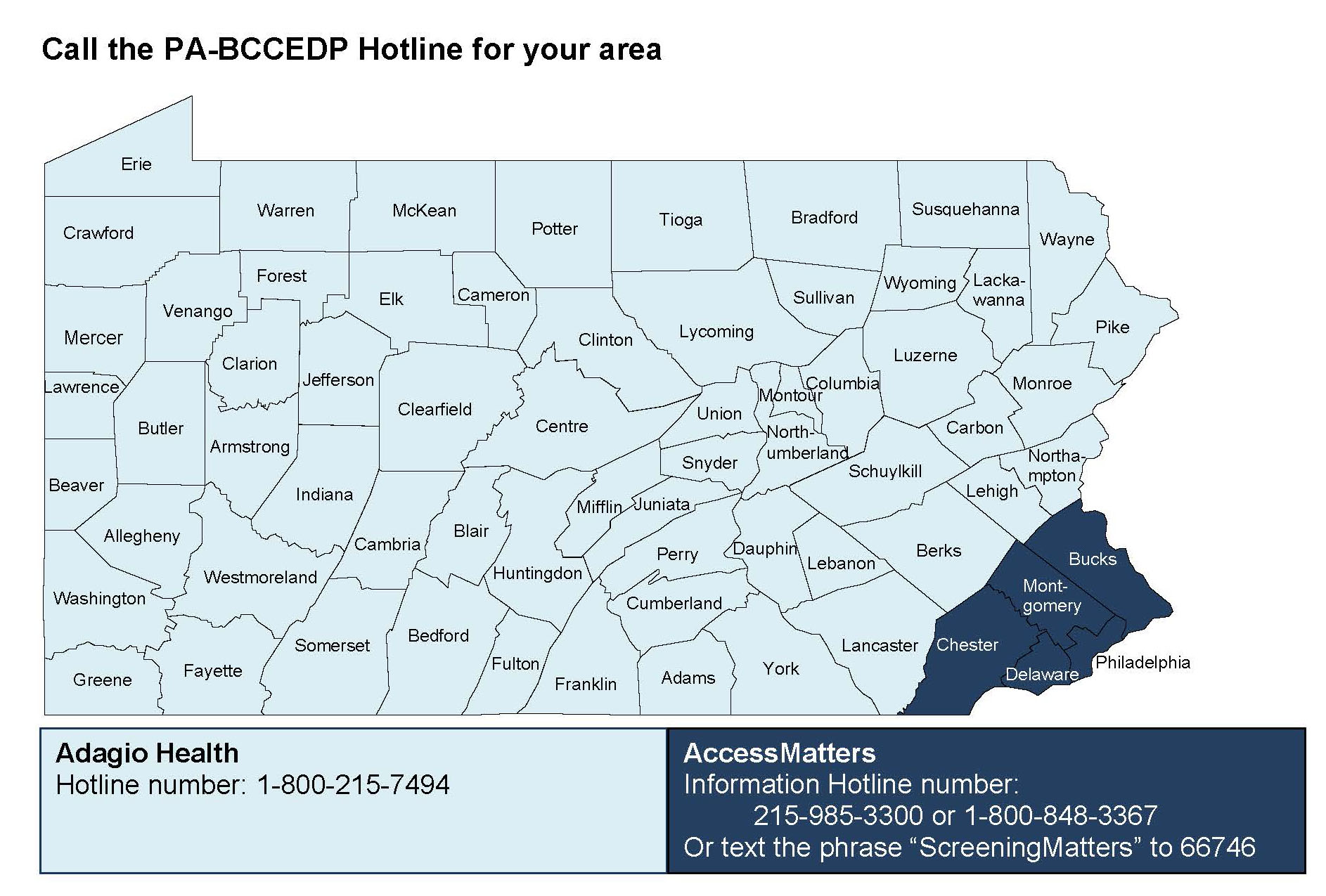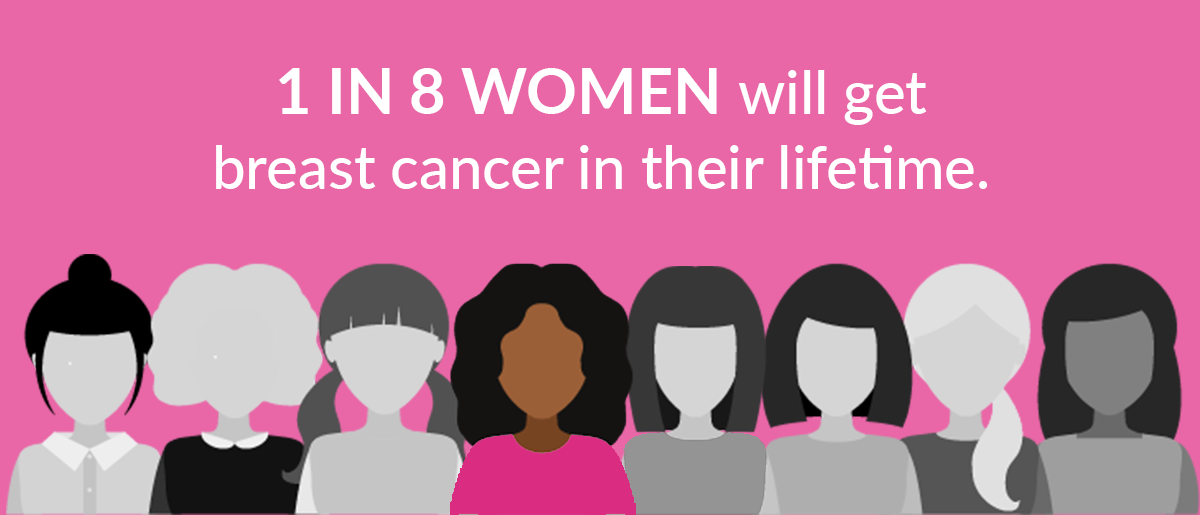Additional Videos
Services
If you meet the requirements, you may be able to get these tests for free.
- Mammograms to look for breast cancer;
- Pap and HPV tests to look for cervical cancer;
- Follow-up tests if results are not normal; and
- Patient navigation, which means help setting appointments and solving other things that make it hard for you to get your tests.
These Things Help You Meet the Requirements
1. Age
- Ages 40 through 64 for breast cancer testing
- Ages 21 through 64 for cervical cancer testing
NOTES:
- Some women who are younger or older may qualify for screening services.
2. Where You Live
You must live in Pennsylvania.
3. Income
You may be able to get tests for free if your family's total income before taxes is at or below the income limits.
2024 Federal Poverty Income Guidelines at 250% of Poverty
Jul 1, 2024 - June 30, 2025
1
| $37,650
| $3,137
|
| 2 | $51,100
| $4,258
|
| 3 | $64,550
| $5,379
|
| 4 | $78,000
| $6,500
|
| 5 | $91,450
| $7,620
|
| 6 | $104,900
| $8,741
|
| 7 | $118,350
| $9,862
|
| 8 | $131,800
| $10,983
|
For families/households with more than 8 persons, add for each additional person.
| $13,450
| $1,121
|
4. Insurance
- You may be able to get breast and cervical cancer tests if you don’t have health insurance or if you are underinsured. Underinsured means you have health insurance, but it does not pay for all of your breast or cervical cancer testing. The program may be able to pay the part your insurance doesn’t pay. If you have Medicare Part B or Medicaid, you do not meet the rules for the program.
- You may be able to get testing from the program if you only have Medicaid Family Planning Services program.
5. Gender
- Transgender people may be able to get tests.

Why is the Pennsylvania Breast & Cervical Cancer Early Detection Program Important?

- One out of eight women will get breast cancer in their lifetime.
- 99 out of 100 people survive breast cancer if tests happen at an early stage when cancer treatment has better results.
- The older you are, the higher your risk of breast and cervical cancer.
- Human papillomavirus, or HPV, is the biggest cause of cervical cancer.
Breast and Cervical Cancer Screening Guidelines
The program uses the US Preventative Services Task Force (USPSTF) cancer testing guidelines for most adults. Screening tests are used to find cancer before you have any signs or symptoms.
| Less than 40 |
Get tested if you have signs or symptoms, or if you have a high risk of cancer |
| 40-49 |
Every two years based on a decision between you and your healthcare provider
|
| 50-74 |
Every two years
* The program covers cancer testing up through age 64. You may be able to get tested for free if you are 65 or older and you don't have Medicare Part B.
|
These are general guidelines. Talk to your healthcare provider about what is best for you.
| Less than 21 |
Testing for cervical cancer is not suggested if you are less than 21 years old unless you have signs or symptoms. |
| 21 to 29 |
Every 3 years with a Pap test alone. An HPV test should not be done unless it is needed after a Pap test that is not normal. |
| 30-65 |
- Every 3 years with Pap test alone or
- Every 5 years with high-risk human papillomavirus (HPV) testing alone or
- Every 5 years with HPV testing and a Pap test at the same time (cotesting)
* The program pays for cancer testing up through age 64. You may be able to get tests if you are 65 or over and don't have Medicare Part B.
|
| Over 65 |
Testing is not suggested if you are up to date with testing and not at high risk for cervical cancer.
|
These are general guidelines. Talk to your healthcare provider about what is best for you.
What Happens if Cancer is Found?
If breast or cervical cancer or a precancerous condition is found through the program, you may be able to get free treatment through the Department of Human Services (DHS) - Breast and Cervical Cancer Prevention and Treatment Program (BCCPT). Free treatment for BCCPT is decided by DHS. For more information visit the
BCCPT website.
If cancer was found by this program’s healthcare provider, the provider will send the BCCPT application for you.
If cancer was found by any other healthcare provider, the provider can download the application form found on the
BCCPT website.
Take Control of Your Health and Help Reduce Your Cancer Risk: